Polystyrene is a material with small uniform closed cells and smooth skin, which makes it suitable for a wide variety of insulation applications. Polystyrene insulation is one of the best types of thermal insulation.
Polystyrene insulation is available in various forms such as tubes and rolls (sheets) in the market and is used for various applications such as insulation of heating and cooling systems, insulation of water and sewage pipes, as well as insulation of walls and ceilings.
why polystyrene is a good insulator
why is polystyrene a good insulator? polystyrene is one of the most widely used thermoplastic polymers in the construction industry, which has wide applications in this industry due to its unique properties such as high thermal and sound insulation, low density, easy moldability, and reasonable price.
Thermal insulation is one of the most important system components in a roof, and protecting the building from heat and cold, it creates a comfortable environment inside the building. The use of polystyrene thermal insulation reduces heating and cooling energy consumption costs. Currently, the importance of polystyrene thermal insulation has increased due to changing insulation standards around the world. Next to the question, why polystyrene is a good insulator? We will answer.
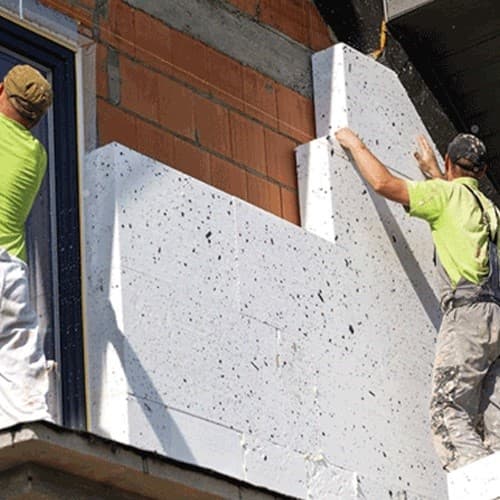
Polystyrene insulation is offered in the form of foam, and some call it Styrofoam, which is actually the brand name of this insulation. In the classification of insulations, polystyrene belongs to the categories of cold insulations and is installed in buildings without the need for heat or ignition devices. This insulation is used to insulate the roof and side walls of the building and it is available in two types of extruded polystyrene and expanded polystyrene.
Expanded Polystyrene (EPS) or Extruded Polystyrene (XPS)
There are two types of polystyrene:
- Expanded Polystyrene (EPS)
- Extruded Polystyrene (XPS)
They can be found in different forms. Polystyrene panels are primarily used to insulate homes, but they can also be used to make collections for art projects.
Insulation properties of EPS foam
Irregular gaps between EPS foam cells allow air and moisture to permeate throughout the foam, making EPS a less-than-ideal solution for humid environments.
Strength and durability of EPS foam
The cellular structures of EPS foam contain voids or spaces between cells. These gaps form an irregular structure throughout the foam, making it less dense and rigid than extruded foams.
What is extruded polystyrene or XPS polystyrene foam?
Extruded polystyrene (XPS) is produced through an extrusion process in which plastic resin and other additives are combined and extruded through a mold. The extruded foam is then cooled and expanded into its final shape.
Insulation properties of XPS foam
XPS foam has a closed cell structure where the cells are placed together and there is no space or space between them. The tightly closed cells of XPS foam help prevent air and water ingress and are suitable for humid environments.
Strength and durability of XPS foam
XPS foam has a tight, closed-cell structure that makes it very rigid, making it ideal for structural panels.
Polystyrene applications
Polystyrene is used in the building as thermal and sound insulation, in the production of wall and ceiling panels, molding for concrete and prefabricated materials. Also, it is used as an insulation for floors and in making decorative decorations such as cornices. Lightness and moisture resistance are the advantages of this material. You can read more about the uses of this amazing substance below.
Thermal insulation
- Walls: polystyrene is used as thermal insulation in the external and internal walls of buildings and prevents energy wastage.
- Roofs: polystyrene is used to insulate roofs and reduce heat loss through the roof.
- Floors: polystyrene is also used to insulate the floors of buildings to prevent the penetration of cold from the floor.
- Pipes: polystyrene is used to insulate hot and cold water pipes to prevent heat loss.
sound insulation
- Walls: Due to its cellular structure, polystyrene is a good sound insulator and prevents the transmission of sound between different spaces.
- Ceilings: polystyrene is used in false ceilings and sloping ceilings to reduce external noise.
Building materials
- Light blocks: polystyrene is used to make light blocks, which are used in the construction of non-bearing walls and partitions.
- Sandwich panels: polystyrene is used as the core of sandwich panels, which are excellent thermal and sound insulation.
- Concrete molds: polystyrene is used to make concrete molds, which reduces weight and increases construction speed.
Other applications of polystyrene
- Packaging: polystyrene is used to package various products to protect them from impact and damage.
- Interior decoration: polystyrene is used to make decorative elements.

Advantages of using polystyrene in building
why polystyrene is a good insulator? Due to its unique properties, polystyrene is one of the most widely used materials in the construction industry. Some of the most important advantages of using Polystyrene in the building are:
High thermal insulation
Polystyrene is a very good thermal insulator due to its closed-cell structure. This feature reduces energy loss in the building and reduces heating and cooling costs.
Good sound insulation
Polystyrene can act as a sound insulator and prevent the transmission of sound between different spaces. This feature is especially important in buildings that need more peace and quiet.
Low density
Polystyrene is a lightweight material and therefore reduces the dead load of the building. This feature is especially important in tall buildings and structures that must be resistant to earthquakes.
Moisture resistance
Polystyrene is resistant to moisture and therefore prevents the growth of fungi and bacteria. This feature increases the lifespan of the building and reduces maintenance costs.
Easy malleability
Polystyrene is easily cut and shaped, and for this reason, it is used in the construction of various building parts such as sandwich panels, molds, and decorative pieces.
Reasonable price
Polystyrene has a more reasonable price than many other insulating materials, and for this reason, its use in buildings is economical.
Resistance to insects and rodents
Due to its closed-cell structure, polystyrene is not attractive to insects and rodents and therefore prevents damage to the building’s insulation.
Is polystyrene a good sound insulator
Due to its structural nature, polystyrene insulators have the ability to reduce sound transmission and are known as one of the sound insulators. This feature helps to create a calm and comfortable atmosphere inside the building and is considered a suitable option for use in places with high traffic or close to noisy roads.

Is Styrofoam a good insulator for cold
Building insulation is one of the most important stages of designing and building a residential house. Due to diverse weather and climatic conditions, it is very necessary to protect buildings against external factors such as moisture, cold, heat, and sound.
Why is polystyrene a good insulator? polystyrene insulation is an effective insulation against the cold. Usually, this insulation is used in coolers and for transporting food that needs to stay cold. Polystyrene insulation can maintain low temperatures for a long time.
Proper insulation not only helps extend the life of the building but can also significantly reduce energy costs. Proper insulations also help to create a comfortable and healthy indoor environment and prevent moisture and noise pollution from entering the building.

Is styrofoam a good insulator for walls
This insulation is used to insulate the roof and side walls of the building. Features of polystyrene insulation One of the most important features of Polystyrene is the light weight of this insulation. Therefore, it is easy to install and does not cause harm to people in the event of an earthquake and falling walls or roof. Also, Polystyrene insulation has other properties, which are mentioned below:
- non-toxic
- Easy installation
- hypoallergenic
- Reasonable price
- Excellent thermal insulation
- Easy recycling
- Durability and longevity
- Easy laminate with epoxy resin
- High resistance to pressure
- High resistance to moisture penetration
- Relatively good resistance to ignition
- Prevent bacteria from entering the building
- Ability to produce in different shapes, dimensions, and compression levels
- Suitable for use inside and outside buildings or prefabricated structures
As mentioned above, polystyrene insulation has high thermal resistance. The reason for this excellent resistance is the existence of millions of air chambers that are locked inside the polystyrene foam. Also, Polystyrene thermal insulation is resistant to moisture penetration due to the same density in its structure.
If you want to use polystyrene insulation as sound insulation, it is better to place this insulation next to rigid materials such as structural insulation panels or SIP to benefit from proper resistance to prevent the entry or exit of sound.
Polystyrene insulation is also easy to install due to its light weight. This factor has also caused manufacturers to use Polystyrene in their structures to facilitate the implementation of insulation and save time. All the features mentioned about polystyrene insulation make this product a suitable option for insulating all kinds of buildings.
Conclusion
In conclusion, polystyrene is an excellent insulator due to its unique properties, such as low thermal conductivity, high thermal and sound insulation capabilities, moisture resistance, and lightweight structure. These characteristics make it a versatile and cost-effective material widely used in the construction industry for insulating walls, roofs, floors, and pipes. Additionally, its ease of installation, durability, and resistance to insects and rodents further enhance its appeal. Polystyrene not only helps in reducing energy consumption and costs but also contributes to creating a comfortable and quiet indoor environment, making it a practical choice for various insulation needs.



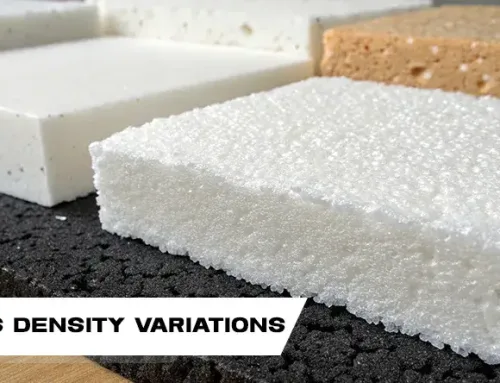
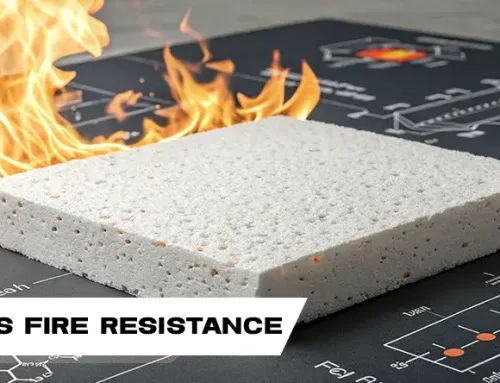
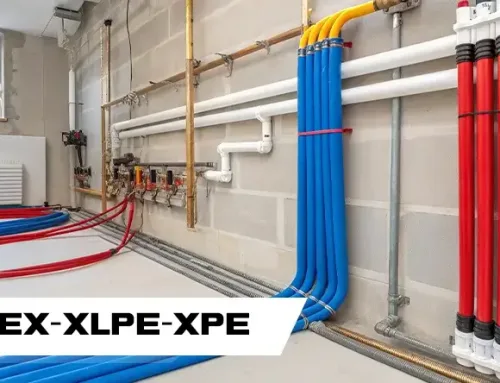
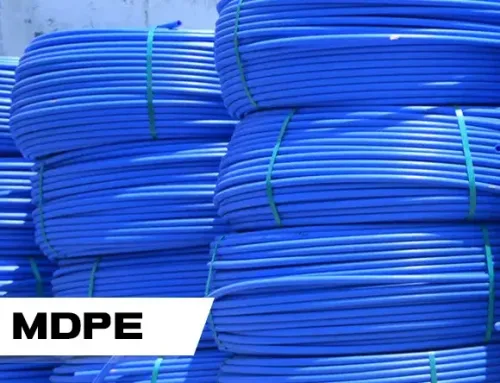
Leave A Comment